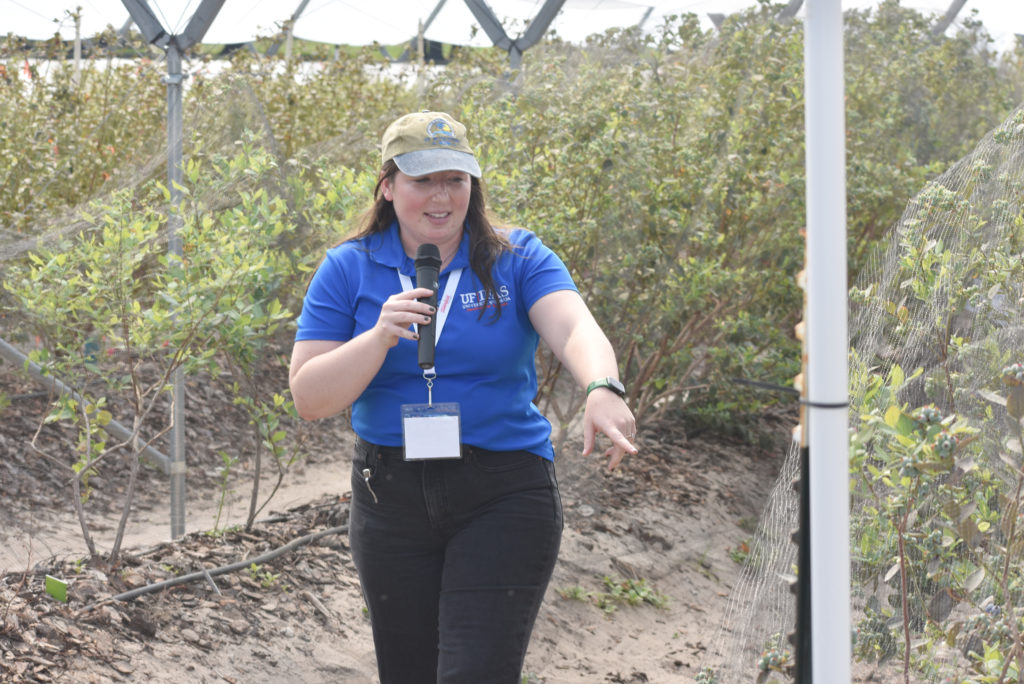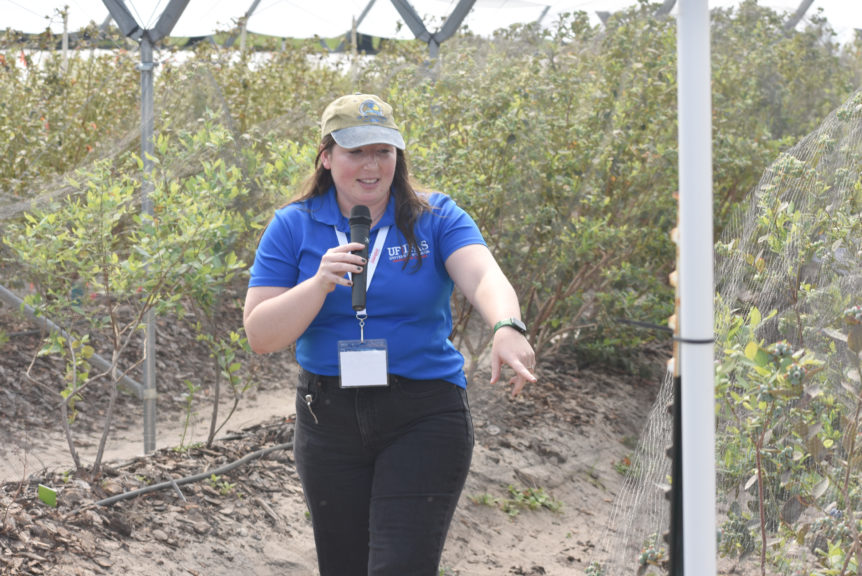
By Clint Thompson
Nitrogen recommendations for evergreen blueberry production in Florida are still a relative unknown for growers. Lauren Goldsby, graduate research assistant at the University of Florida Institute of Food and Agricultural Sciences (UF/IFAS), hopes to provide some clarity with research at the UF/IFAS Citra location.
“We’re aware that we can produce evergreen production in the state of Florida. We’re not aware exactly how much nitrogen we need in order to make that happen and optimize our yield there,” said Goldsby, who discussed her research at the Florida Blueberry Growers Association spring meeting and field day on March 7 at the Plant Science Research and Education Center in Citra, Florida. “This project is funded by the Florida Department of Agriculture and Consumer Services to get a better idea of what those requirements are to keep evergreen systems and what their leaf nitrogen concentration does in response to that.”
Goldsby said evergreen blueberries comprise about 50% of current production in Florida. Plants located south of I-4 can naturally evergreen, though in the north-central part of the state, it has to be done in high tunnels to maintain a mild climate. Conditions that are too cold can lead to dropped leaves and damaged fruit.
“Evergreen blueberries don’t go dormant during a typical dormancy period where we see deciduous production does. That’s a combination of warm, mild winters, sub-tropic growing conditions, good genetics and the addition of nitrogen continuously throughout the winter period. That helps us retain those leaves,” she added.
Results So Far
Though research is still in its infancy, it has yielded interesting results.
“We found that the more nitrogen you put into the plant, the larger they grow. At some point we’ll do more research to fully understand the optimum range, but there is a point at which you can continue applying fertilizer that you don’t continue to get those yields. That’s what we observed and want to hone in on a little more next year,” she said.










